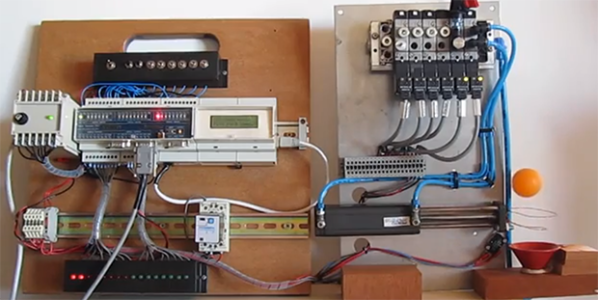In industrial applications, controlling relays, servos, solenoids, and the like isn’t just a matter of wiring in an Arduino and plugging in some code. No, for reliable operation you’ll need a PLC – a programmable logic controller – to automate all your hardware. PLCs are usually pretty expensive pieces of hardware, which led [Warwick] to come up with his own. He built two versions, one large and one small that can handle just about any task thrown at them.
Both devices are powered by an ATMEL SAM7S ARM chip running at 48 MHz. The smaller of the two devices has 10 digital inputs, 4 analog inputs, and 8 digital outputs able to sink 200 mA each. The larger PLC has 22 digital ins, 6 analog ins, and 16 digital outputs. Both of these devices have a ton of connectivity with USB, RS-232 and RS-485 ports
Below you can see the large PLC being used as a barcode scanner and as a strange device using compressed air to levitate a ping-pong ball. There’s also a demo of the smaller PLC lighting up some LEDs.











